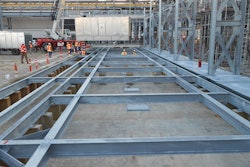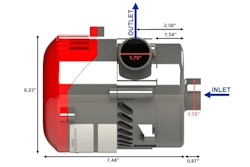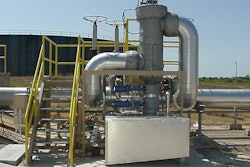
WASHINGTON - Following a comprehensive internal review, NASA announced Wednesday its intent to discontinue development of its VIPER (Volatiles Investigating Polar Exploration Rover) project.
NASA stated cost increases, delays to the launch date, and the risks of future cost growth as the reasons to stand down on the mission. The rover was originally planned to launch in late 2023, but in 2022, NASA requested a launch delay to late 2024 to provide more time for preflight testing of the Astrobotic lander.
Since that time, additional schedule and supply chain delays pushed VIPER's readiness date to September 2025, and independently its CLPS (Commercial Lunar Payload Services) launch aboard Astrobotic's Griffin lander also has been delayed to a similar time.
Continuation of VIPER would result in an increased cost that threatens cancellation or disruption to other CLPS missions. NASA has notified Congress of the agency's intent. According to NASA, via the AP, about $450 million had been spent so far on the project.
Moving forward, NASA is planning to disassemble and reuse VIPER's instruments and components for future Moon missions. Prior to disassembly, NASA will consider expressions of interest from U.S. industry and international partners by Thursday, Aug. 1, for use of the existing VIPER rover system at no cost to the government.
Astrobotic will continue its Griffin Mission One within its contract with NASA, working toward a launch scheduled for no earlier than fall 2025. The landing without VIPER will provide a flight demonstration of the Griffin lander and its engines.
NASA will pursue alternative methods to accomplish many of VIPER's goals and verify the presence of ice at the lunar South Pole. A future CLPS delivery – the Polar Resources Ice Mining Experiment-1 (PRIME-1) -- scheduled to land at the South Pole during the fourth quarter of 2024, will search for water ice and carry out a resource utilization demonstration using a drill and mass spectrometer to measure the volatile content of subsurface materials.
Additionally, future instruments as part of NASA's crewed missions – for example, the Lunar Terrain Vehicle -- will allow for mobile observations of volatiles across the south polar region, as well as provide access for astronauts to the Moon's permanently shadowed regions for dedicated sample return campaigns. The agency will also use copies of three of VIPER's four instruments for future Moon landings on separate flights.
The VIPER rover was designed to search Earth's Moon for ice and other potential resources – in support of NASA's commitment to study the Moon and help unravel some of the greatest mysteries of our solar system. Through NASA's lunar initiatives, including Artemis human missions and CLPS, NASA is exploring more of the Moon than ever before using highly trained astronauts, advanced robotics, U.S. commercial providers, and international partners.





















